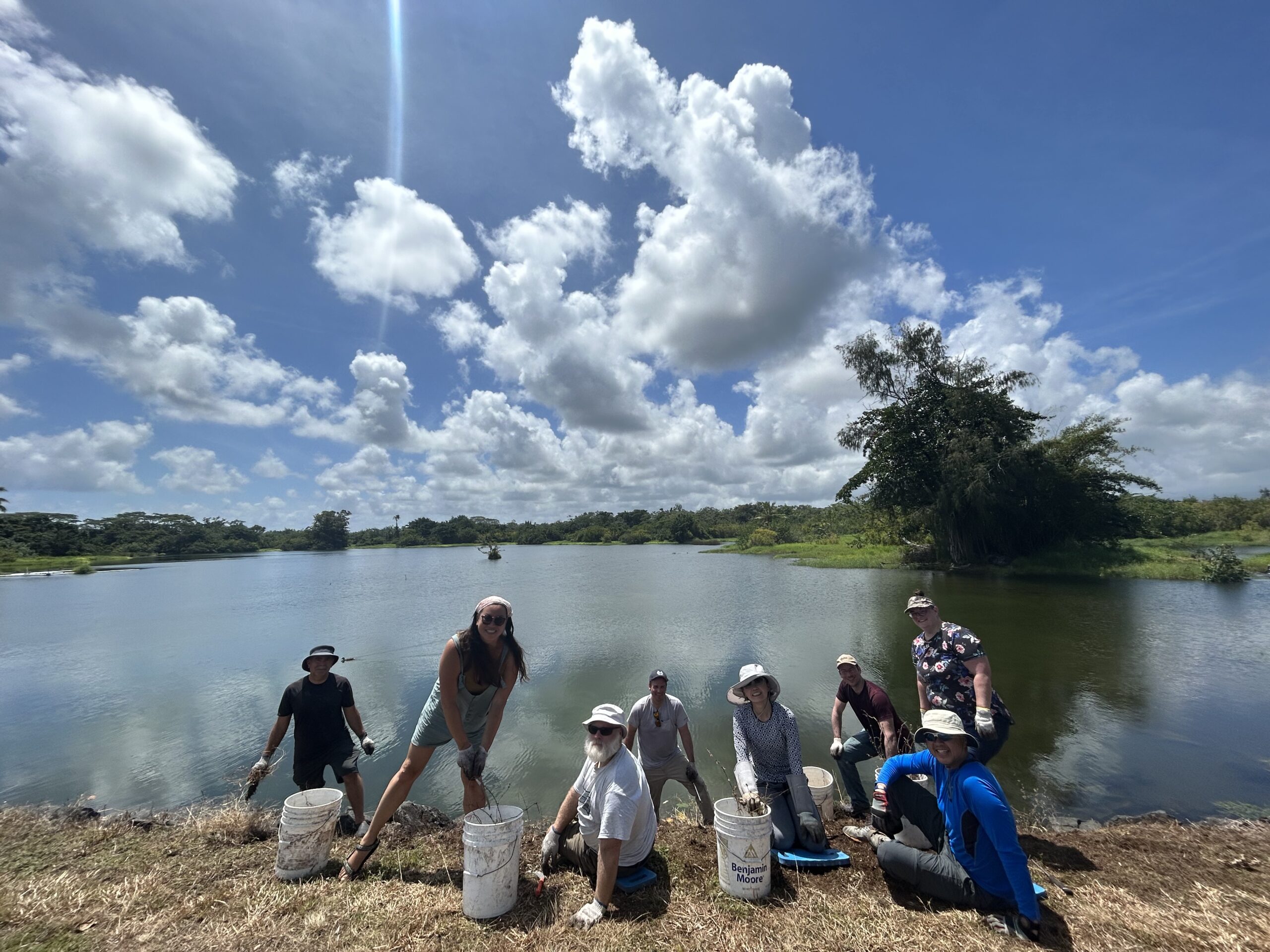Hawaiʻi Island has lost approximately 75% of its historic low elevation wetlands due to infill and development, and much of the remaining wetland habitat is degraded by invasive non-native plants. Most of the loss is in Hilo. Our goal is to restore the habitats for threatened and endangered native birds and migratory birds at the 51-acre Lokowaka Pond complex in Hilo. With the help of many dedicated local and visiting volunteers, we are removing invasive non-native vegetation which is covering most of the marsh and restoring the area with native vegetation.
Lokowaka Pond complex is a very important habitat for the endangered and threatened birds and migratory birds. In the Pacific Birds Habitat Joint Venture’s Strategic Plan for Hawai‘i Wetlands 2024, Lokowaka ranked as the eleventh most important wetland statewide and is in first place for Hawaiʻi Island. https://pacificbirds.org/wp-content/uploads/2024/02/PB-Hawaii-Plan-FINAL-2.27.24-reduced.pdf
Please join us and take a hands-on role in restoring the beautiful wetlands of Hilo. By volunteering with us, you will not only contribute to conservation efforts but also gain a deep understanding of our unique ecosystem. You will see the direct impact of your work as you help native species flourish and watch our wetlands come back to life.
For the current list of volunteer days, please visit our website at https://ainahoola.org/
What to Wear and Bring:
Be prepared for changing weather conditions and wet/muddy/uneven terrain. We will be hand removing invasive weeds and replanting areas with native plants, rain or shine. Squatting, kneeling, and sitting are great weeding positions. There may be some bending, lifting, and stretching as well. Some types of grass have sharp, microscopic bristles all over them to help discourage bugs from eating them. When these tiny bristles rub against your skin, a rash may result from the irritation. Children are particularly likely to get rashes from grass because they have more sensitive skin. This rarely happens but it is possible.
The nearest restrooms are across the street at Kealoha Beach Park. Showers are also available at the park.
– Clothes you don’t mind getting wet and dirty. Long sleeved shirt and long pants are recommended for sun and insect protection (There may be broken pieces of glass, ants, mosquitoes, and centipedes. )
– Closed toed shoes, reef shoes, tabis, or diving boots that you don’t mind getting wet and muddy (There may be broken pieces of glass, ants, mosquitoes, and centipedes. )
– Sun protection (A hat or cap, reef-friendly sunscreen, sun glasses, etc.)
– Rainwear
– Gloves and tools (hand weeders and serrated sickles) are provided but please bring your own if you have them.
– Water in your own reusable bottle
– Insect repellents (optional)
– Change of clothes and footwear
– A bag for wet/muddy clothes and footwear
– A towel
– Swimwear (optional) There is a beautiful beach park called Carlsmith within a short walking distance. It is a great place to swim and see honu (green sea turtles) after the work is done.

March 24, 2025 9:00 am 12:00 pm
Social
Location:
- Island of Hawai‘i
Sign Up
ʻĀina Hoʻōla Initiative will reach out to confirm once you RSVP.